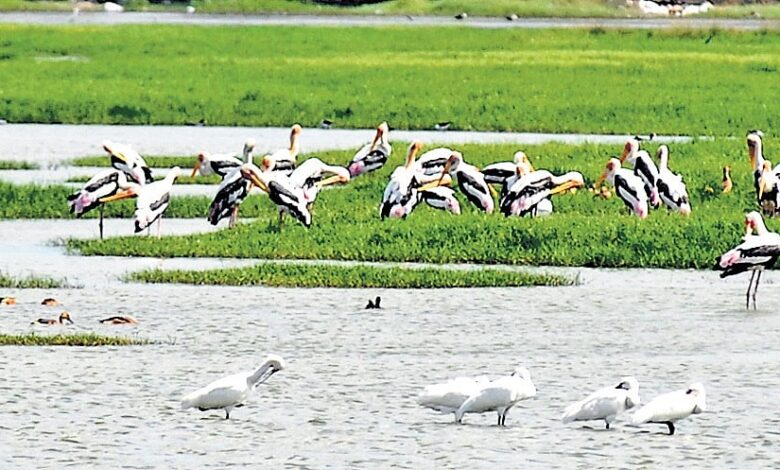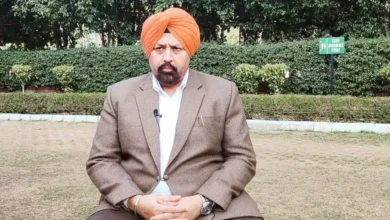Tamil Nadu Pushes to Notify 100 Wetlands Amid Stakeholder Resistance

Chennai, February 2, 2025 – In a significant environmental move, the Tamil Nadu government is advancing its plan to notify 100 wetlands under conservation laws. However, the proposal has encountered strong resistance from farmers, fishermen, and local communities, who fear restrictions on their livelihood activities.
The government, led by Chief Minister M.K. Stalin, is engaging with stakeholders to address concerns while simultaneously applying for central funds under the National Plan for Conservation of Aquatic Ecosystems (NPCA). The initiative is expected to enhance biodiversity, prevent land degradation, and bolster climate resilience.
Why is Tamil Nadu Notifying Wetlands?
Wetlands play a crucial role in flood control, water purification, and biodiversity preservation. Tamil Nadu, with its rapid urbanization and industrial expansion, has seen significant wetland loss over the past decades. By notifying 100 wetlands, the state aims to:
✔️ Protect water bodies from encroachment and pollution
✔️ Enhance groundwater recharge and prevent floods
✔️ Promote eco-tourism and biodiversity conservation
✔️ Access central government funds for wetland restoration
Resistance from Local Communities
Despite its environmental benefits, the plan has met with opposition from farmers, fishermen, and landowners, who worry about potential restrictions on fishing, farming, and grazing activities.
🗣️ A farmer from Kanchipuram expressed concern:
“Our lands depend on water from these wetlands. If they impose restrictions, it will affect agriculture.”
🗣️ A fisherman from Ramanathapuram added:
“We rely on these water bodies for fishing. Will we be forced out in the name of conservation?”
To counter these fears, the government is assuring stakeholders that existing activities won’t be disrupted and that sustainable livelihood models will be promoted.
Government’s Stand: Balancing Ecology and Economy
Tamil Nadu Environment Minister Siva V. Meyyanathan has reiterated that the wetland notification aims to protect ecosystems without harming livelihoods. He stated:
🗣️ “We are engaging with communities to ensure their rights remain protected. Sustainable conservation is our goal.”
The state is also working on a framework where farming and fishing practices can continue under regulated eco-friendly guidelines.
Central Funds and Conservation Plans
By notifying 100 wetlands, Tamil Nadu will become eligible for financial assistance under the National Plan for Conservation of Aquatic Ecosystems (NPCA). These funds will be used for:
🔹 Wetland restoration and afforestation
🔹 Water quality monitoring and pollution control
🔹 Eco-tourism and sustainable community engagement
🔹 Biodiversity conservation and habitat protection
Expert Opinions: Why Wetland Conservation Matters
📌 Dr. V. Sundararajan, Ecologist:
“Tamil Nadu’s wetlands are shrinking due to urbanization. Conservation is urgent to prevent water crises.”
📌 Professor R. Kumar, Environmental Scientist:
“Balancing conservation with community needs is key. If done right, both ecology and economy can benefit.”
📌 WWF India Representative:
“This move aligns with India’s commitment to wetland conservation under the Ramsar Convention.”
Future Roadmap: What’s Next?
🚀 Community Consultations: Government will continue engaging with stakeholders to reach a consensus.
🚀 Sustainable Guidelines: New policies will be drafted to allow responsible farming and fishing.
🚀 Infrastructure Development: Wetland eco-tourism projects may be introduced to boost local incomes.
🚀 Scientific Research & Monitoring: Experts will track the impact of conservation efforts.
Conclusion: A Step Toward Sustainable Development
Tamil Nadu’s initiative to notify 100 wetlands is a significant step toward environmental conservation. While challenges remain, the government’s assurance to protect livelihoods and secure central funds signals a balanced approach. As discussions continue, the state remains committed to finding a middle ground between ecological preservation and economic sustenance.






